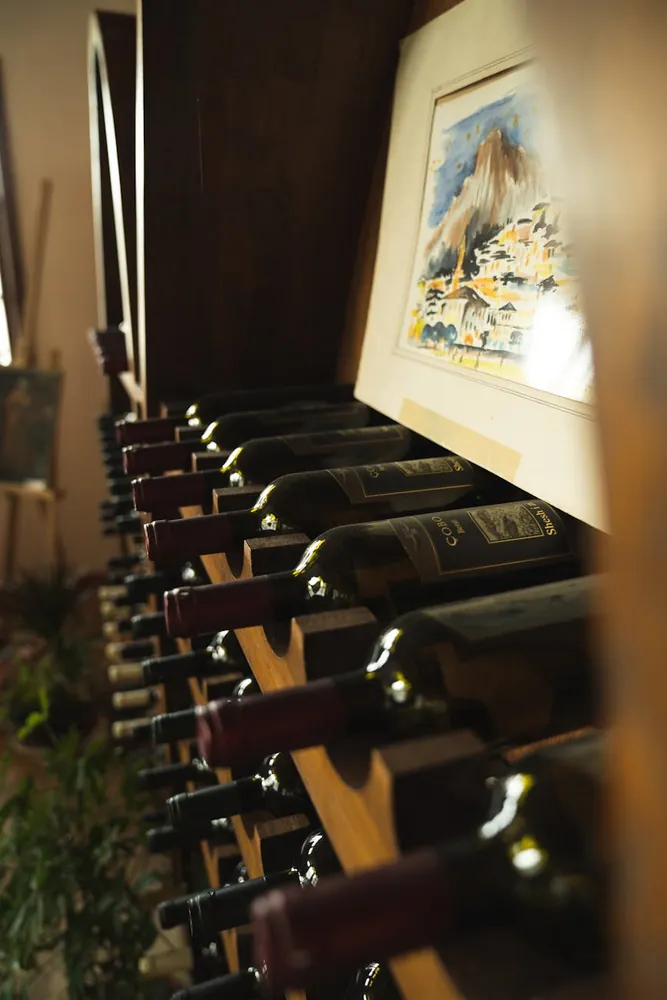contrasting personalized experiences at small wineries and large estates

The Allure of Personalized Wine Tasting Experiences
In the world of wine tasting, the pursuit of a truly unique experience has become an emblem of luxury. Wine enthusiasts today are not only keen on sampling the finest wines but also yearn for an immersive experience that goes beyond the conventional tasting room. In this landscape, two distinct categories have emerged: small boutique wineries and large estate vineyards.

Small Boutique Wineries: A Haven for Intimacy and Innovation
The charm of a small winery often lies in its intimacy and personalization. These establishments, usually family-owned, offer a close-knit atmosphere where visitors can engage with winemakers directly. Imagine wandering through picturesque vineyards with the very hands that crafted the vintage you are about to enjoy.
Craftsmanship and Personal Touch
Smaller wineries excel in showcasing the craftsmanship behind their limited production wines. The winemaking process here is less about volume and more about quality and uniqueness. As such, visitors often find themselves partaking in exclusive tastings of rare batches, sometimes right out of the barrel.
- Tailored Experiences: Many small wineries pride themselves on offering tailored experiences that cater to specific tastes and preferences. This might include personalized tasting flights, food pairings curated by local chefs, or even blending sessions where guests can create their own custom wine.
- Direct Engagement: Visitors often have the opportunity to discuss the intricacies of viticulture and oenology with the winemakers themselves, gaining insights into the meticulous art of crafting fine wine.
Example: The Napa Gem
An exemplary small winery is Smith Family Vineyards in Napa Valley. Here, visitors are treated to a private tour led by the Smith family members. Each visit is bespoke, focusing on seasonal wines and highlighting unique vineyard practices such as organic farming methods. The personal stories shared during these tours add a layer of connection that resonates deeply with wine lovers seeking authenticity.
Large Estates: Grandeur and Legacy
On the other hand, large estate vineyards offer an entirely different kind of luxury experience—one that emphasizes grandeur and legacy. These estates often boast historical significance, sprawling landscapes, and extensive facilities dedicated to providing a comprehensive wine experience.
The Splendor of Scale
The scale of operations at large estates enables them to offer a range of activities and experiences that smaller wineries cannot match. From exquisite tasting rooms that overlook vast vineyards to state-of-the-art production facilities, the magnitude here is awe-inspiring.
- Diverse Offerings: Large estates often feature multiple tasting rooms, guided tours of their extensive cellars, and art collections. Many also have gourmet restaurants on-site where expert chefs craft dishes designed to complement the estate’s wines.
- Historical Depth: Often steeped in rich history, these estates provide a glimpse into the past. Storytelling is a significant aspect of their tours, detailing how generations have shaped both the land and its produce.
Case Study: Chateau Margaux in Bordeaux
A perfect illustration is Chateau Margaux in Bordeaux, France. Known globally for its prestigious wines, visiting Chateau Margaux is akin to stepping into another era. Guests can partake in exclusive tours of their iconic cellars and enjoy tastings of vintage wines that tell stories of decades gone by. The estate’s elegant architecture and meticulously maintained gardens further enhance the grandeur of the experience.
The Trade-offs: Intimacy vs. Grandeur
The decision between visiting a small boutique winery or a large estate hinges on personal preference and what one seeks from the experience.
Considerations for Choosing Your Experience
Intimacy: For those who value close connections, learning from passionate winemakers, and relishing an intimate setting, smaller wineries are undoubtedly appealing. These visits feel personal, with the opportunity for in-depth engagement that extends beyond wine itself.
Grandeur: If one’s preference leans toward experiencing luxury through history, opulence, and a diverse array of offerings, then a large estate might be more fitting. These venues provide a well-rounded day out with abundant amenities and activities to explore.
Practical Tips for Planning Your Tour
No matter which type of winery you choose to visit, planning ahead can enhance your experience significantly.
Booking Your Visit
- Reservations: Always make reservations in advance, especially at popular estates or during peak tourist seasons. This ensures you have a spot for any exclusive events or tastings offered.
- Research: Investigate both online reviews and official websites to gather information on what each location offers. Look for specific experiences that match your interests, whether it’s a blending session or an architectural tour.
Understanding Wine Etiquette
- Tasting Order: Typically, tastings proceed from white to red wines to prevent flavor contamination. Pay attention to the host’s guidance to enhance your tasting experience.
- Pace Yourself: Enjoying wine is about savoring flavors. Take your time to appreciate each pour without rushing through.
The Future of Wine Tourism: Blending Both Worlds
The evolution of wine tourism continues as both small wineries and large estates innovate to attract discerning visitors. Increasingly, we see a convergence where large estates adopt boutique-like personalized experiences within their offerings while small wineries expand facilities to include more immersive experiences typical of larger operations.
This blend not only broadens the appeal of wine tourism but also provides more varied options for luxury seekers worldwide. Whether your choice is a cozy Napa vineyard or an expansive Bordeaux chateau, one thing remains certain—the world of wine is rich with opportunities for exploration and delight.
 Modern Knowledge House
Modern Knowledge House